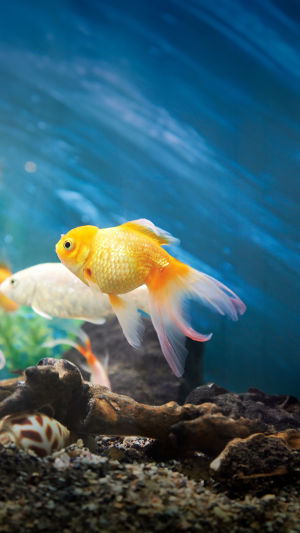Have you ever stopped to think about how animals that live in water manage to breathe?
Unlike humans who breathe air directly through lungs, aquatic animals have developed fascinating and diverse methods to extract oxygen from their watery environments.
In this article, we will dive into the various breathing skills of aquatic creatures — from fish to mammals — and uncover how these adaptations help them survive and thrive underwater.
<h3>Gills: Nature's Underwater Respirators</h3>
One of the most common breathing structures among aquatic animals is the gill. Fish, amphibians in their larval stage, and many invertebrates rely on gills to extract oxygen dissolved in water. Gills are made of thin filaments packed with blood vessels that allow oxygen to diffuse from the water into the bloodstream, while carbon dioxide moves out. This gas exchange is incredibly efficient, enabling fish to "breathe" underwater continuously as water flows over their gills.
<h3>How Fish Use Their Gills</h3>
Fish maintain a constant flow of water over their gills either by opening and closing their mouths or through a process called ram ventilation, where they swim with their mouths open to push water through the gill slits. The design of gills maximizes surface area for oxygen absorption, which is essential since water contains less oxygen than air. This system allows fish to stay underwater for their entire lives without ever needing to surface for air.
<h3>Breathing in Aquatic Mammals: The Use of Lungs</h3>
Unlike fish, aquatic mammals such as dolphins, whales, and seals do not have gills. Instead, they breathe air through lungs and must surface regularly to breathe. These animals have developed extraordinary lung capacity and can hold their breath for long periods—some whales can dive for over an hour before needing air. Their bodies also store oxygen efficiently in muscles and blood, helping them survive deep dives where no air is available.
<h3>The Role of Blowholes and Breathing Techniques</h3>
Aquatic mammals have adapted blowholes—specialized nostrils located on top of their heads—that allow quick breathing when surfacing. This adaptation reduces the time they spend exposed above water, helping avoid predators and maintain speed. Their breathing is voluntary, meaning they consciously decide when to surface and inhale, unlike humans who breathe automatically.
<h3>Amphibians: Dual Breathers of Land and Water</h3>
Amphibians like frogs and salamanders use both lungs and skin to breathe. When underwater, they absorb oxygen directly through their moist skin, a process called cutaneous respiration. On land, they use lungs to breathe air. This dual system allows them to live both in aquatic and terrestrial environments, making them unique among many animals.
<h3>Specialized Breathing in Unique Aquatic Species</h3>
Some aquatic animals have evolved extraordinary breathing methods. For example, the sea turtle can hold its breath for several hours underwater, slowing its heart rate to conserve oxygen. Lungfish can breathe air through lungs and survive in mud during dry seasons. Another example is the diving bell spider, which traps air bubbles to carry oxygen while it hunts underwater. These adaptations highlight nature's creativity in helping animals overcome the challenges of underwater breathing.
<h3>Oxygen Levels and Environmental Challenges</h3>
Water environments vary widely in oxygen content. Cold, fast-moving streams usually have high oxygen levels, while warm, stagnant waters may have less. Aquatic animals must adapt to these conditions, and their breathing skills often reflect the environment they live in. Pollution and climate change can reduce oxygen levels in water, posing risks to these animals. Scientists emphasize the importance of protecting aquatic habitats to ensure these creatures can continue to breathe and thrive.
<h3>Conclusion: The Amazing Adaptations of Aquatic Breathing</h3>
The ways aquatic animals breathe reveal incredible adaptations shaped by millions of years of evolution. From gills to lungs, blowholes to skin respiration, each method suits the animal's lifestyle and habitat perfectly. Next time you see a fish swimming or a dolphin leaping, think about the amazing breathing skills behind their survival.
Have you observed any aquatic animals and wondered how they breathe? Feel free to share your thoughts or questions—nature's mysteries are always worth exploring!





